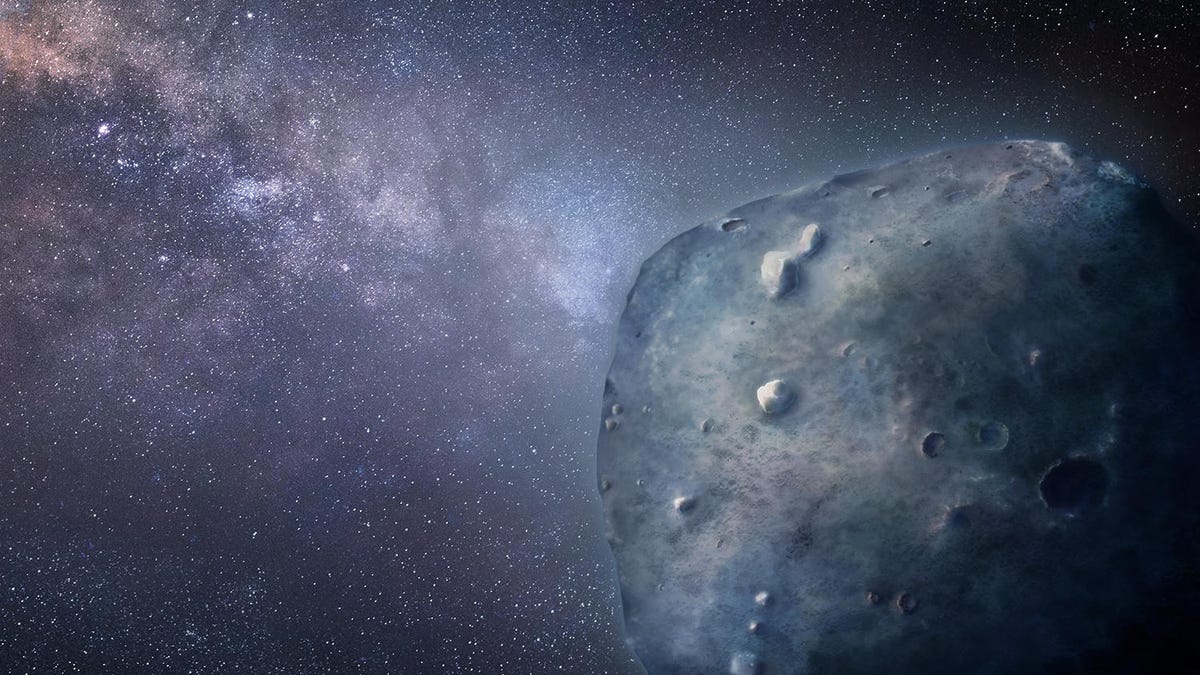Skyscraper-sized asteroid could actually hit Earth (but probably won't)
Asteroid 2020 DR2 is now the most concerning space rock around, but that doesn't mean there's much reason for concern.

An artistic impression of an asteroid.
Every week, tabloid media outlets pump out scary headlines about asteroids passing by Earth that pose no actual threat. This week is no different, except that ironically, an asteroid has been spotted that actually does come with a risk of impact for once. Sooner or later the tabloids will learn about asteroid 2020 DR2 and attach an apocalyptic headline to it. So let's get this straight up front: the danger is currently miniscule and decades away.
The European Space Agency's Planetary Defense Office reports that 2020 DR2 is a 600-meter (1,969-foot) asteroid -- that's about the size of One World Trade Center in New York -- that was first spotted on Feb. 20. It has a probability of about 1 in 80,000 of hitting our planet in 2081 and a less likely chance of impact in 2074.
This preliminary assessment of 2020 DR2 places it at the top of the "risk list" maintained by NASA and other space agencies of space objects that are monitored for potential impacts with Earth.
On most days, the risk list is a collection of about two dozen objects with a Torino Scale rating of zero, which means there is effectively no chance the object will impact the surface of our planet. 2020 DR2 is the rare asteroid that has maintained a Torino rating of 1, even as more early observations come in, allowing astronomers to refine their model of the object's path through space.
But the Torino Scale rates objects from zero to 10, so although 2020 DR2 is currently the most concerning asteroid we know of, there's actually little reason for concern. Here's how NASA explains what a Torino rating of 1 means:
"A routine discovery in which a pass near the Earth is predicted that poses no unusual level of danger. Current calculations show the chance of collision is extremely unlikely with no cause for public attention or public concern. New telescopic observations very likely will lead to re-assignment to Level 0."
This actually happened to another asteroid discovered in February. Asteroid 2020 BW14 is even larger than 2020 DR2 and was originally rated a Torino Scale 1 when first spotted Feb. 7, but follow-up observations dropped it down to a zero and it was pulled off the risk list entirely just three days later.
Eventually, astronomers are likely to determine that 2020 DR2 will pass safely beyond earth when it comes close later this century. But for now, 2020 DR2 is one of the most interesting asteroids to watch in the inner solar system.

